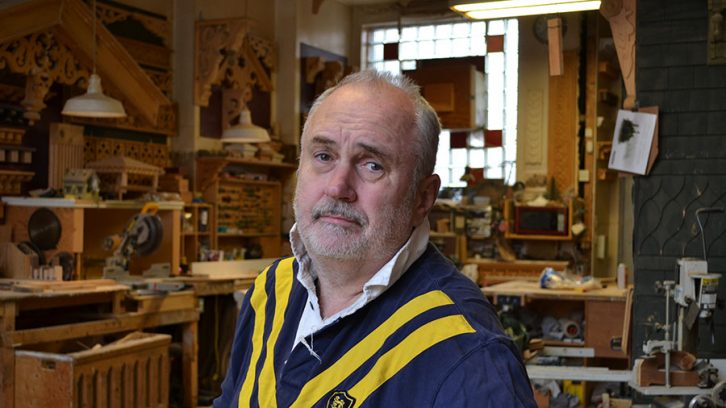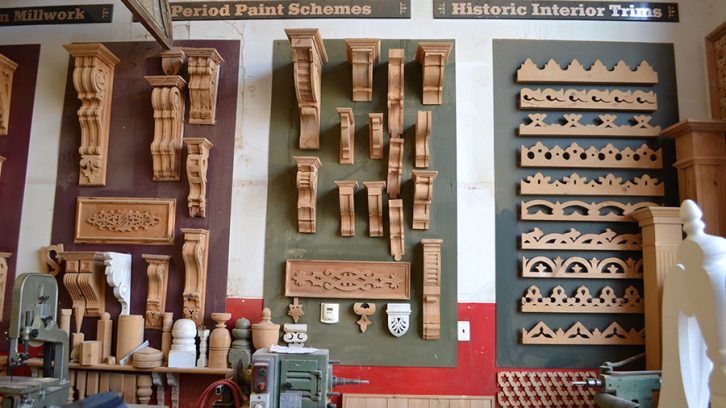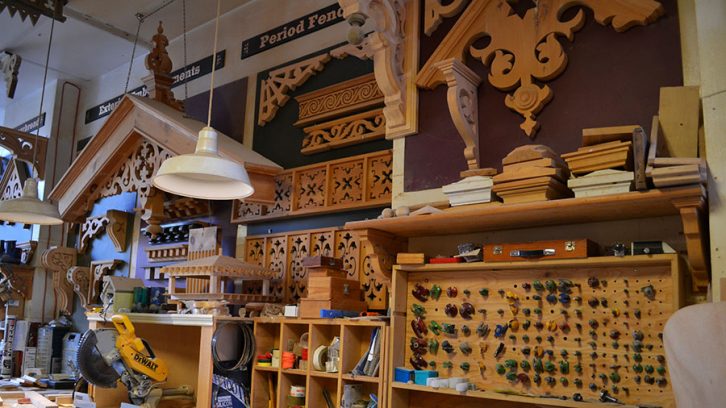Business
Restoration with a dramatic twist
Hal Forbes mixes his theatre background with wood craftsmanship to create works of art

caption
Hal Forbes in his Gottingen Street workshop
caption
Hal Forbes in his Gottingen Street workshop.
The owner and operator of Forbes Restoration, a craftsmanship-centred heritage carpentry shop in Halifax’s North End, Forbes sat down with The Signal to discuss art coming to life – whether on stage or in craftsmanship.
“My degree is in costumes, but as odd as that sounds, the two disciplines are almost identical,” he says. “First stage of a costume is you don’t sew it: you build it. The costume has to be built on a foundation that allows it to be as fresh on closing night as it was on opening night.”
His self-titled shop on Gottingen Street is a testament to his expertise. Examples from different historical eras of carving, styles and designs cover the walls, with tools scattered liberally throughout the shelves and tables.
After a successful career in theatre and a brief love affair with TV, Forbes toured with Rita MacNeil – a Cape Breton singing icon.
Perched on a stool in the middle of his handmade kingdom, Forbes ruminates over his past endeavours and how they shaped his current work.
“Both costuming and restoration are existing references that you have to honour and oblige and get right,” he says.
To do so, Forbes has well over 1,000 reference books in his personal library, and estimates that there are least 50,000 reference photos on his computer, taken while on trips around the world.
“Many people have an idea of what they would like, but no actual reference point,” he says. “So it is my job to be able to help the client realize their ideal house.”
More than just visual references are needed to produce something that looks authentic to Forbes, you need to do your homework.

caption
Examples of Forbes historically based work
“To understand the art you have to have to understand the history. It’s not just a famous piece; it’s a piece that was inspired by the pattern of the times.”
Forbes runs a small crew of up to 13 craftsmen, depending on the project. He also guest lectures for heritage carpentry class at a college in Charlottetown and serves on their advisory board.
His grassroots approach to business means “taking care of the community” he works in. He often lends a teaching hand to local contractors who might be installing his heritage pieces for clients.
“If we go to a site and a local contractor is fully capable of doing everything but the very delicate things we specialize in,” Forbes says while crossing his arms across his chest. “I like to offer to show them skills that can help them develop their craft.”
In Forbes’ world, the client comes first.
“They don’t know the wood or the tools like we do, but I always make sure I am not going to railroad the client into something they are not going to love,” he says. “At the end of the day, I want them to go home to their perfect example of a house.”
Despite the common conception of custom work being expensive, Forbes wants the public to know that his work is “attainable and affordable.”
One of the very few heritage restoration workshops in Nova Scotia, Forbes estimates that he has worked on 70 to 100 projects in the Halifax Regional Municipality since his shop opened in 1994.
“You have to let the house speak to you,” he says. “Otherwise, you will never be able to do it justice.”

